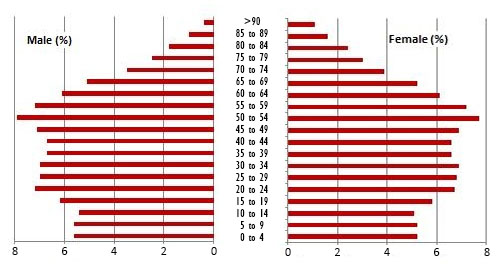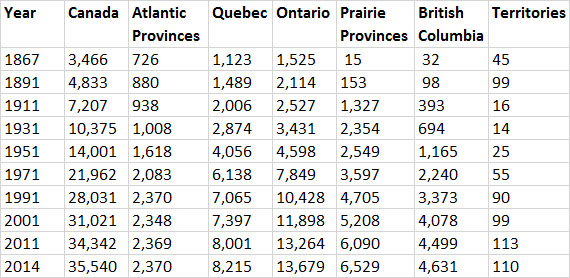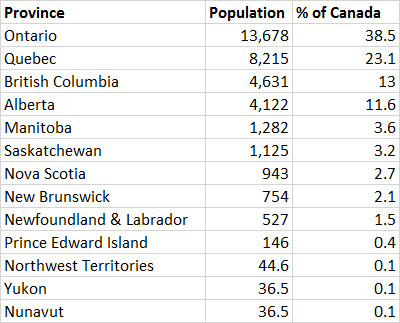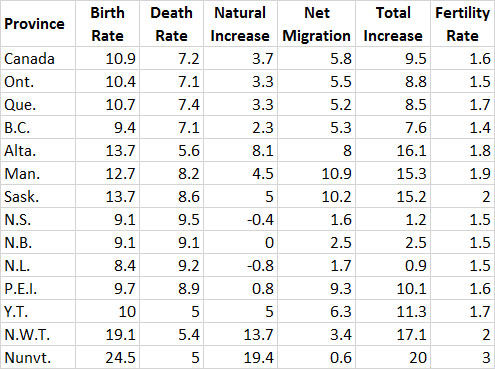Canadian Statistics on Population Case Study Paper.
Follow the Statistics Canada website and answer using accurate data!
Q1. What is the latest CPI indicator? What percentage change was there from the previous year? What sectors reflected an increase in price since last year? What sectors reflected a decrease in price since last year? What items are volatile components and how are they treated in calculating CPI?
Q2. What is the latest unemployment rate indicator? How many new full-time jobs were created? What sectors created these new jobs? What sectors laid-off employees? What province saw the greatest monthly increase in jobs? What province saw the largest unemployment rate for the past month? Canadian Statistics on Population Case Study Paper.
Q3. What is the latest GDP indicator by industry? What percentage change was there from the previous quarter? What sectors contributed to an increase in production from the previous month? What is the total dollar value of all products that were produced last quarter?
Q4. Statistics Canada conducts a census every five years. Why is the Census important? Who is included in the Census? Who will use the Census information? (Click on Census bar)
Q5. Return to the Statistics Canada homepage. What is the population of Canada right now? How can businesses use this information? Visit Bank of Canada website and answer the following: Q6. Find the latest inflation figures. Based on the latest statistics, is inflation or deflation the biggest problem today?
The age structure of the Canadian population is illustrated in Figure 11.5. In general, the pattern is typical of a population that has progressed most of the way through its demographic transition. Note, however, the anomalous bulge of numbers that corresponds to the baby boomers. Fecundity dropped in Canada after the baby boom, and once this bulge has worked its way through the population structure, the age distribution will assume a more uniformly vertical shape. As the baby boomers age and retire from work, they are expected to exert significant strain on Canada’s capacity for providing social and medical care for its elderly citizens.
Although Canada has a population structure characteristic of a country that has almost completed its demographic transition, the growth rate remains relatively high, at about 1% per year. Much of the population growth is due to immigration. Although this factor is not related to age-class structure, it is notable that relatively young people of childbearing age are prominent among immigrants to Canada. This adds further momentum to population growth.
ORDER A CUSTOM-WRITTEN, PLAGIARISM-FREE PAPER HERE
Figure 11.5. Age Structure of the Canadian Population in 2014. This diagram shows the relative numbers of people by age. The demographic “bump” of people peaking at about 55 years old corresponds to a period of high birth rates that occurred in the post-war 1940s to early 1960s, known as the baby boom. Source: Data from Statistics Canada (2014c). Canadian Statistics on Population Case Study Paper.
Regional Differences
All regions of Canada have experienced substantial population growth during the past century (Table 11.1). During the past several decades, however, the increases have been most rapid in Alberta, British Columbia, Ontario, and Saskatchewan. In 1867, the Atlantic Provinces accounted for 21% of the Canadian population, while Quebec was 32%, Ontario 44%, and the rest of the country 3%. At that time the western regions were largely unsettled, but tremendous population growth has since occurred there. The Atlantic Provinces now account for 7% of the Canadian population, Quebec 23%, Ontario 39%, the Prairie Provinces 18%; British Columbia 13%, and the three territories 0.3% (Table 11.2).
Table 11.1. Regional Distribution of the Canadian Population. These data show the growth of the population of Canada and its regions since Confederation in 1867. Note that data for the Prairie Provinces prior to 1901 include only Manitoba. Data for Alberta, Saskatchewan, and Yukon were combined with the Northwest Territories until 1901, when they became separate political units. In 1949, Newfoundland joined Canada. Data are in thousands of people. Data from Statistics Canada (1992, 2014d)
Table 11.2. Population by Province and Territory in 2014. Data are in thousands of people. Data from Statistics Canada (1992, 2014d).
The highest rates of natural population increase (births minus deaths) occur in Nunavut (1.9%/year), the Northwest Territories (1.4%/y) (Table 11.3). In those territories, the populations are dominated by persons of First Nations and Inuit communities, which tend to have relatively large families and a higher rate of population growth. Those territories also have the lowest mortality rates, largely because of their comparatively young populations. Canadian Statistics on Population Case Study Paper.People younger than 15 years comprised 30% of the population of NU and 21% of NWT in 2014, compared with a national average of 16% (Statistics Canada, 2014g). Overall, the age structure and growth rates of these territories is comparable to regions that are only beginning to pass through their demographic transition, and in that sense, they are anomalous with the rest of Canada.
Table 11.3. Demographic Parameters by Province and Territory. Data are per 1,000 people in the population and are annual rates (for 2014; note that a value of 10 per thousand per year is the same as 1% per year). Data for total increase include net migration. Fertility rate is the average number of births per woman aged 15-49 (in 2011). Data from Statistics Canada (2014e,f).
Alberta, Manitoba, and Saskatchewan have the fastest population growth rates among the provinces, averaging 1.6% per year (2014), which is equivalent to a doubling time of only 45 years. This rapid rate of population increase occurs in spite of a relatively small natural rate of population increase. Obviously, the populations of these provinces are growing because of high rates of immigration from other countries and from other regions of Canada.
The population of Canada is much denser in southern parts of the country, and especially in urbanized areas (Figure 11.6). This pronounced spatial pattern reflects the distribution of economic opportunities in Canada, most of which are related to urbanization, climate, and suitability of the land for agriculture.
Figure 11.6. Population density in Canada. The areas marked in red account for 75% of the population, while those in light-orange account for almost 25%. The area in white, which accounts for about 99% of the area of our country, holds less than 1% of the population. Map modified from Natural Resources Canada (2012). Canadian Statistics on Population Case Study Paper.



